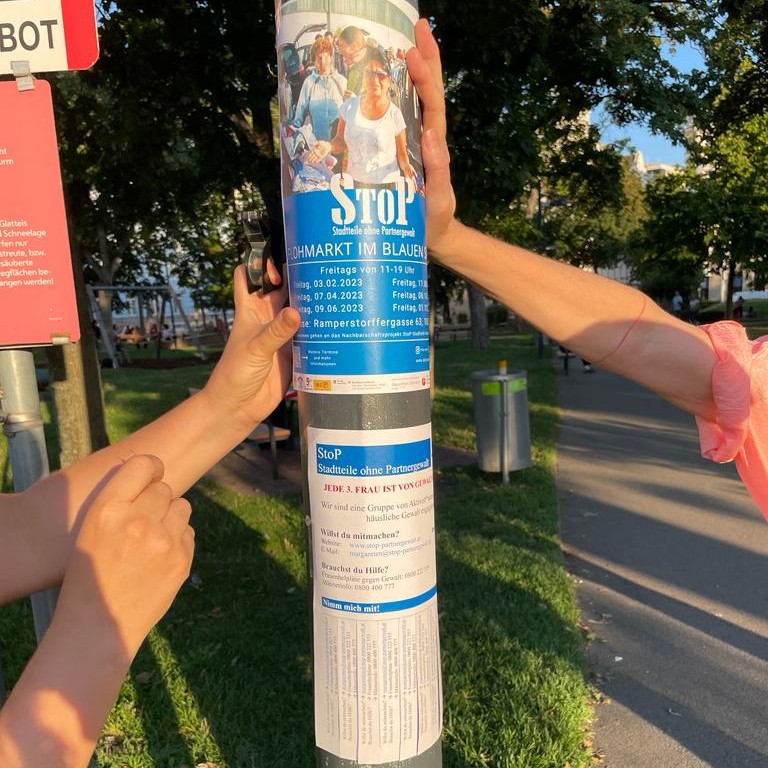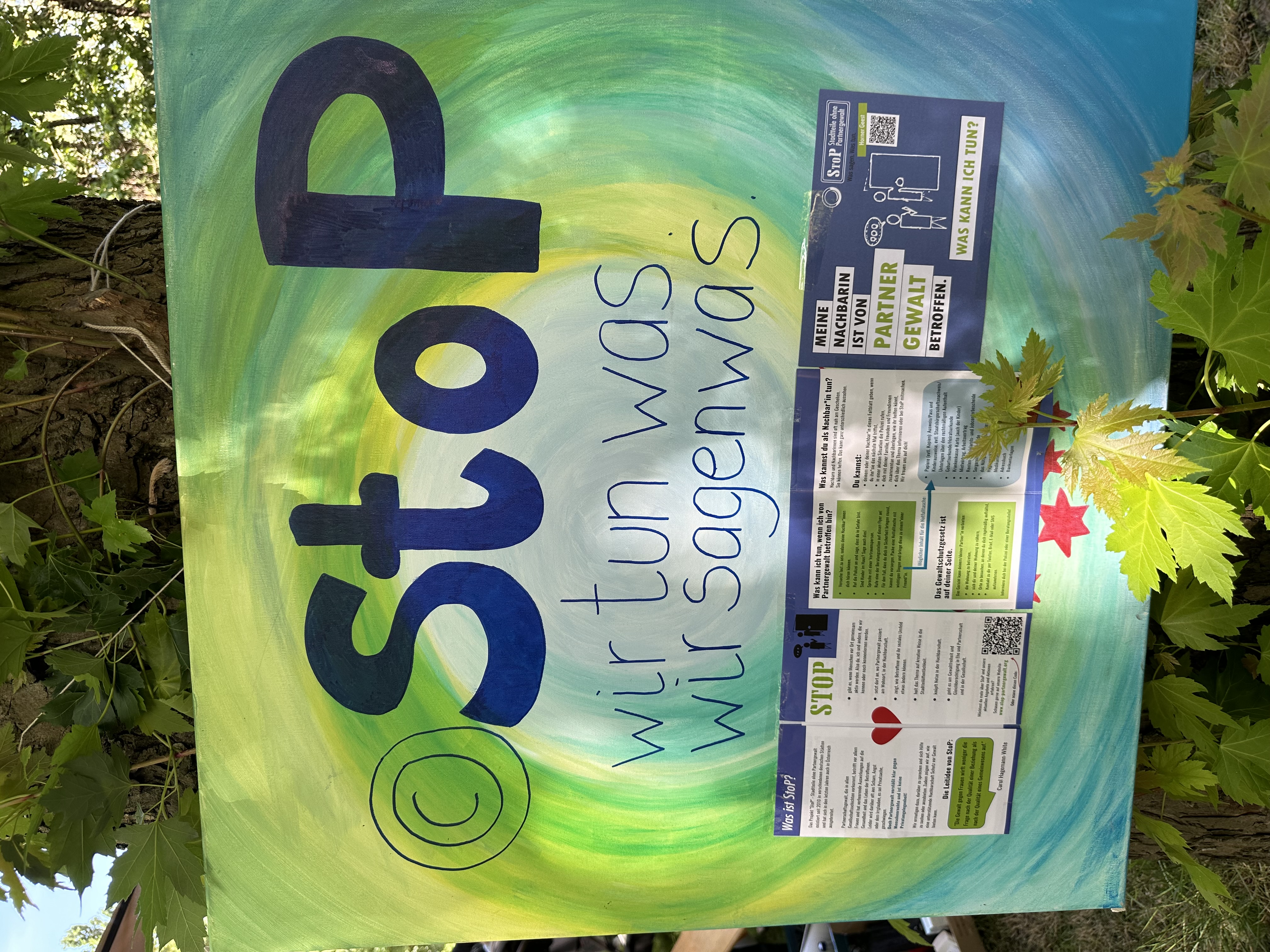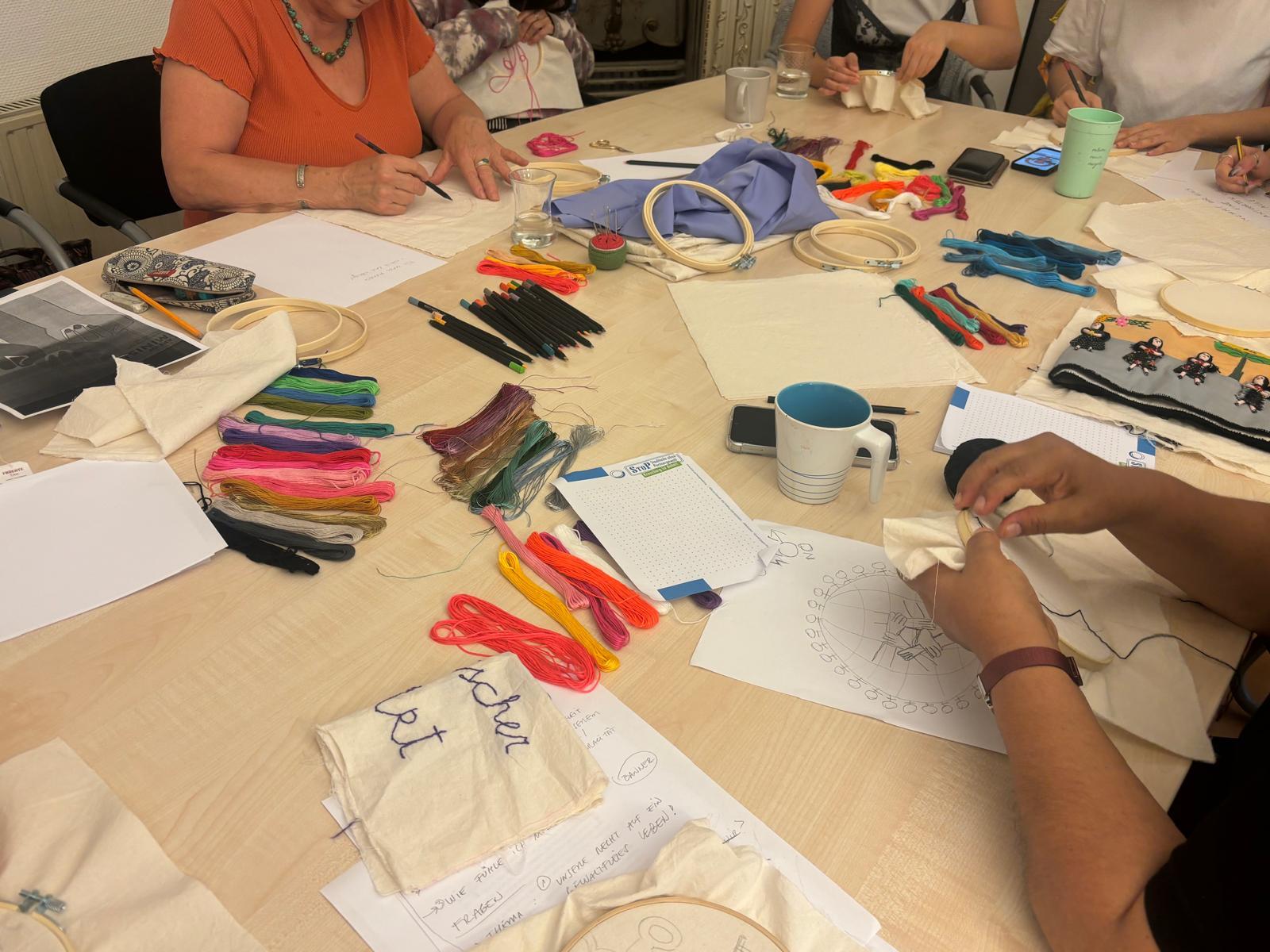Why
Step 6 focuses on individual support for survivors and on establishing links to the professional support system (e.g. counselling services, shelters). In order for people to seek help, it is important that they have easy access to information about the support system. Therefore, it is helpful if they can find this kind of information and awareness about domestic violence in their daily lives.
What
This resource is a staircase flyer that shows what to do when people witness violence in their neighbourhood. This flyer can be distributed in stairwells, on notice boards, in churches, clinics, at the bus stop – the possibilities are endless. The aim is for people who are experiencing violence to get help from their neighbours. For neighbours to be able to help, they sometimes need guidance or support, which the stairwell flyer provides.
Objectives
- For victims: to encourage them to break the silence and seek help by offering them the contact details of the support system
- For neighbours: to be prepared to link victims/survivors to the professional support system
- Raise awareness
- Communicate the support system
Facilitators guide
The stairwell flyer can either be created by the StoP organiser or, preferably, jointly developed by the StoP community group. A possible headline could be the StoP motto: “Are you witnessing violence in your neighbourhood? Say something! Do something!”. The content of the flyer should be short and to the point, and no longer than one A4 page. This size is suitable for posting in stairwells and on bulletin boards in institutions (e.g. schools, shopping centres). The flyer provides an overview of the options available when violence is suspected. The Austrian template for this flyer can be found in the download section, and is only briefly summarised here:
- Interrupt the assault
- Talk to your neighbours
- Talk to the person affected by violence
- Call the women’s helpline
- Participate at StoP
Very important are the contact details of local information centres and telephone numbers such as the police, emergency services, helplines, women's refuges, online services, services for children and the elderly. The StoP contact number is also necessary.
Time and people needed
Time: 1,5–3 hours for preparation, time is not limited for distribution the flyer
People: 2–5 for preparation, no limit for people to distribute the flyer
Target groups
- neighbours
- cooperation partners
- training participants
- victims
Steps / Action

- Preparation of the staircase flyer
- Distribution to neighbours, cooperation partners, training participants
- Distribution in the public space (it is possible to make a list of the different places for an overview) and online
- Check the distributed flyers (still hanging, possible smearing)
Material
- Copies of the staircase flyer
- Tape
Links
-
Austrian StoP website with the staircase flyer translated in different languages:










